
Official Edgar Rice Burroughs Tribute and Weekly Webzine Site
Since 1996 ~ Over 10,000 Web Pages in Archive
Volume 3740
Presents

Big Bwana and his Children
THE WAZIRI
by
Jairo Uparella and Adrianita Garavito Rozo
(Jai & Neetah)
ALL DRAWINGS BASED ON RUSS MANNING ART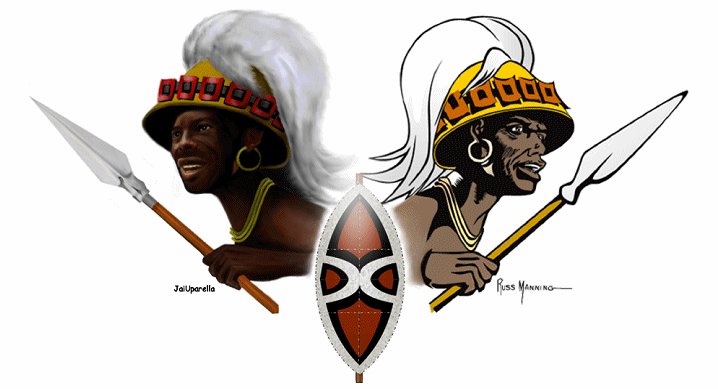
"'Something is coming, Bwana,' said Muviro, sub-chief of the Waziri."
The novels, movies and comic books about Tarzan of the Apes, have a cast of main characters that make this adventure in the jungle something noteworthy. Two human races, white and black, are at a stage where the ethnic issue is not considered as the most important thing when we see the context in which it implies confrontation or feelings of friendship between the characters of one or other race. Despite the notes on the racial aspect of Tarzan and the Africans and that some people in a malicious way wanted to show something adverse to the opinion, for true fans and readers of the works of Edgar Rice Burroughs is understood that the black man plays an important role in any of the means mentioned above.
The fact that Burroughs has not stepped on African soil for inspiration in his writings does not mean that he did not know the political and economic situation of the regions. The natural environment we know today, dating from long before man appeared on earth, gave priority to the animals that have been evolving and living in the great forests and parks around the world. But in Africa, the black man is the main protagonist of this environment despite the alleged precarious situation in which they live and the wars fought by the imposition of power and the expulsion of lands, the continent continues to be mysterious and hold the most beautiful places on earth.
Africa is a continent, just such as America. This represents 32% of the total land. It has countries, states or republics that in one or another way have sought to get ahead in their cultural affairs, political and economic. Its mysterious history is not only based on the customs of the peoples, but of the incidence of foreign peoples who came to colonize and seek sources of progress. We believe the story written by Edgar Rice Burroughs, referring to the tasks imposed by the British Colonial Office to his men, gives us a good cause to dig a little deeper into what actually happened in these distant lands. The first of these missions is the one that never took place, at least not for the first man who had been commissioned to investigate about other European power that was enslaving blacks for the exploitation of rubber and ivory on the banks of the Congo and the Aruwimi. And so, for many of us, the story begins in Africa, on the west coast, 10 degrees south latitude, a little away from the theories of hatred and contempt among the people or the misery of the same, supposedly what has unleashed these bloody battles. For that time, Angola did not exist (to quote one of the republics) as we know it today. There were several Bantu families who settled in the vicinity of the Congo River due to economic or political circumstances.
But there were tribes who already knew the intentions of the people who were supposedly civilized neighbors. Slavery was what they feared most, despite being brave warriors. Their losses would not reflect age or gender. The Arabs had an interest in ivory, a product of nature that can only be taken after the death of Tantor. Unlike some tribes who used to make utensils for their own use, some inhabitants of the Arabian Peninsula knew the value that it represented in the luxuries of unscrupulous in other countries. The presence of the Portuguese, British, French and Spanish in the region was evident. These settlers sought to get the riches that mama-Africa produced. The enslavement of large numbers of blacks seemed the way to get these products. The promises of a better life was one of the tricks with which they could convince a poor, first-unwary native. At other times it was brute force that made adults, youth and even women and children, work long hours in search of a gold nugget or a diamond.
The news didn't run easily among peoples who were distances apart. Occasionally there were wars between tribes seeking to occupy locations offering benefits for hunting, fishing or agriculture. For a while it stopped the fighting between the tribes because of the agreements that were made to recognize and respect the land that served as support. But sometimes clashes with tribes from distant lands came about and the need to defend to death what already was obtained was understandable and inevitable. And not leaving out those who were shunned, which science called "cannibals", already established in their territories, were defined as being possessed by a demon who fed on human flesh after the completion of cases full of spells and rituals dance of death that put goose bumps on the bravest of black warriors.
There were also noble warrior tribes who lived by other tasks including hunting and fishing. The Waziri occupied a large region in Angola. They were not numerous, but their cunning and intelligence in defense strategies, made them a respectable people.
The Waziri Tribe
Background and History
For documentation of anthropological studies of tribes in the lands surrounding the Congo and Angola, this ethnic group was discovered in the mid-seventeenth century, but today we know that they were established hundreds of years ago on the west coast of Africa. They became experts in agriculture, grazing, hunting, fishing and metallurgy, which led to their further development . The Waziri are recognized as rich blacks with great wisdom.
The Waziri implemented a program to rescue their knowledge and customs, changing to a more ancestral system where the principle is to be "free men in free land." Their social and economic unit would be based on production, guided by a leader military conviction that under a strict training schedule their strategies would protect the tribe. Many years later, with the coming to power of a young chieftain named Waziri, he gave them the status of military organization.
During the period of slavery in Europe, Arabs created a human trafficking network. They were enablers of transport and sale of blacks being loaded onto the Indian Ocean. Not unrelated to this cruel treatment, the Waziri were also victims of the network created by the Arabs, because they had achieved the highest reputation among the tribes of the area as the best hunters of elephants. These animals were a giant meat for the sustenance of the Waziri, for each animal provided them with an average of 500 kilos that allowed them to feed an entire village for a long period of time.
The Waziri earned their reputation not only as hunters for the elephants but as guardians and caretakers of this species, as they were well aware of their locations and travel routes. Being conquered by the Arabs, that were face with a conflict of beliefs but this strengthened them as a tribe and produced a feeling of collective unity. This resulted in them becoming a powerful group, generating a struggle which was joined by blacks of other tribes - such is the case of Wagambi. This led them to be recognized as "the great warrior tribe."
Population
It was characterized by a rural population where the majority of people are adults, followed by the elderly and young people predominantly male. The roles of men and women were shared in farm work, home and education. Governmental issues, training, defense and hunting were handled by the males, leaving the women in charge of the craft issues and cooking. Waziri population consisted of about 4500 people, some living dispersed or somewhat removed from the main village.
Dwelling
The Waziri always have been known for being good architects and from ancient times have developed various types of huts that enabled them to live in separate families, providing the necessary privacy for each. These huts were made in a fiber base cane, bamboo or other material that support the mass of mud which is a mixture of water, soil and fiber -- shaped and then dried in the sun. This kneading in some cases they did with their feet, until the dough would not stick to the skin. These huts were round, with diameters of six to eight meters; the wall was two meters tall with a ceiling of five meters in a round shape. This roof shape was different from those of other tribes which come to a point. However, depending on the household members, there were huts of different sizes. The roof was made of palm fiber, sisal caught with each of the brackets having concentric vegetable fiber down over it. They used different colors to give a natural touch to homes, so you can find huts mostly white with colored stripes or prints of beige, khaki, ocher, brown and black.
Its interior was divided with curtains woven in some cases of cotton and linen. The floor was bare and usually adorned with zebra and antelope skins. The interior walls were adorned with paintings, shields and masks. Over time, the Waziri learned other architectures taking the opportunity to give an urban touch to the village founded by the family Greystoke for their socioeconomic development.
Language

Waziri hutsThe main language of the Waziri was Swahili, a dialect of Bantu, but they haf the ability to speak English with a slight Spanish accent or Portuguese, so also it was easy to understand the latter two languages. Etymologically, "Swahili" is derived from the Arabic "sawihil" meaning “coast”.
Physical
The Waziri were a special Negorid breed. Physically, the Waziri were thin and medium-high average height in the range from 1.75 m to 1.80 m and weighing 80 kg, which made them more agile in their activities. They were characterized by dark brown skin, oval head and forehead, dark eyes, medium nose without being remarkably broad, fleshy lips and dark curly hair.
Social organization
The boss Waziri, who was killed in the conflict with the Arabs, had also formed them as a hierarchical group where the top leader or king, was chosen by other political members, who exercised their functions taking into account respect for their customs and religious conviction.
After the death of his boss and independence of the Arabs, the Waziri reorganized and began to move, conquering certain territories and progressed deep into the thick jungle cut off from the world and becoming an apparently extinct but not forgotten.
Religion
Their religion was based on a spiritual and material plane. In the world of spirits their dead ancestors were mid-way between the real and the divine. And in the material, the animal nature and its environment provided them with a real plane of survival and struggle. The intersection between these two points explains the importance of the Waziri thought and idiosyncrasies.
Cultural traditions
Simple in his dress, the Waziri used natural elements such as linens, leather, cotton and wool. Their women and men were adorned with earrings and necklaces in the form of rings, belts and bracelets covering part of the forearm and ankle. The body painting was a complementary motif used only for ceremonies, hunting and war, with designs and figures depicting native fauna and flora. As an ornamental technique, they used ostrich feathers mainly to decorate headdresses, ankle and bibs. The feather signified ancestral wisdom and respect. To obtain these feathers they pluck the living bird so as to maintain their softness and flexibility. Those who wore black feathers with white edges from the male ostrich were members of the government. Those in preparation for those positions, carried brown feathers obtained from the female ostrich.
Ostrich skin was also highly valued, especially the area of the legs, which was obtained through a conservation system at low temperature. This work was done by those who were more experienced and knowledgeable about nature. It was worn as a symbol of their knowledge and intelligence. The skins of animals like the lion or leopard were displayed only in cases which suggests that the animal was killed by attacking a member of the tribe. Skins were used less as they were replaced by dyed fabrics with enriched techniques of weaving, spinning and of fabrics from plant and animal fibers. The use of dyes involved ancestral knowledge of medicinal, culinary and sharks, which involved a process of planting and cultivation under the climatic conditions, soil and method of collection. This was subsequently reflected in color and tone, depending on the material and the fiber used.
This work was performed mainly by women, youth and even children of the tribe, who had established a beautiful garden of fresh plants of many colors, like red yellow, yellow-greens and oranges. This had completed its process of maturation of the ground cover leaves, petals and fruit giving it a beautiful color, so that it would still retain color for later collection and dye process. Young craftsmen and women used plant fibers such as banana leaves, which were used to make baskets, wrap raw foods like meat and fish, cheese or grain mass of maize or rice. Jute, a herbaceous plant native to Asia and Africa, is a vegetable fiber of great firmness that was used for making containers, wrappers, woven rugs, sacks, ropes, fabrics and other products.
Economy
At first glance, Waziri economy was based on agriculture and animal husbandry techniques related to climate and environment. Among the agricultural products there were bananas, coffee, cocoa, sweet potato, peanut and others. Animal husbandry was in the form of intensive rotational grazing. They raised cattle and goats not only for their daily sustenance, but for their fur. They developed the art of tanning leather that later was decorated with paintings of plant origin. Mineral resources were an inexhaustible source that opened new ways of development, such as making tools and utensils, iron molds of tin, lead, zinc and others.
Gold was used for decoration and making pots and utensils for easy malleability, but most of these vessels were of earthenware decorated with gold. The trade was conducted with the exchange of raw materials and sale in some local markets, often receiving money from different types of foreign currency.
Art
The concept of art was based on the representation of their ancestors, authorities and the nature around them, mainly from the point of view of the sculpture, for which they were expert in carving wood. The models sculpted in this way were treated with soil, ash and animal fat. These sculptures represents combinations of features and human and animal bodies. For their rituals, all sculpture had symbols that expressed their ideology and religious myths.
Masks were the most-used artistic displays as they represented a way to leave behind the threats and atrocities to which they were subjected by the Arab invasion. This event was marked as the worst period in their lives, but also represented the strength of brotherhood and collective struggle.
The colors were another expression of symbolic meaning. All they artistically elaborated was painted with earth colors like green, black, white and red.
Dances
The art of the dances and rhythms of the Waziri was indigenous, which combined rustic percussion instruments and strings, with the sound of the voice. Their knowledge in various natural materials such as wood and animal skin, allowed them to design instruments that produced sound quality required for the rites and calls. The drum, maracas, cymbals and other instruments such as horns accompanying festivities recreated real sounds. The drums and horns were also used as the main instruments for transmitting messages to a few kilometers, enough to send an alert sound.
From sports to skills training
Although sporting events were, they took the advantage of certain days for live training simulations, where they could develop the use of arms. More than a match to see who was the best or to win a prize for their skills in military tactics, the Waziri supported each other to improve these capabilities and improve Waziri military power to defend its people and interests. The spear and the shield were their best weapons. But a Waziri was also trained in firearms such as rifles and machine guns.
Weapons and tools
For private use, weapons and tools were made from the minerals such as iron and copper. The spearheads were cast and wrought iron, which were incorporated into a long wooden handle carved and sometimes decorated with colored feathers. The shields, which allowed them to fend off some projectile weapons were manufactured in multicolored leather and reinforced in the back with wood. Other tools were hammers, machetes, axes and even saws.
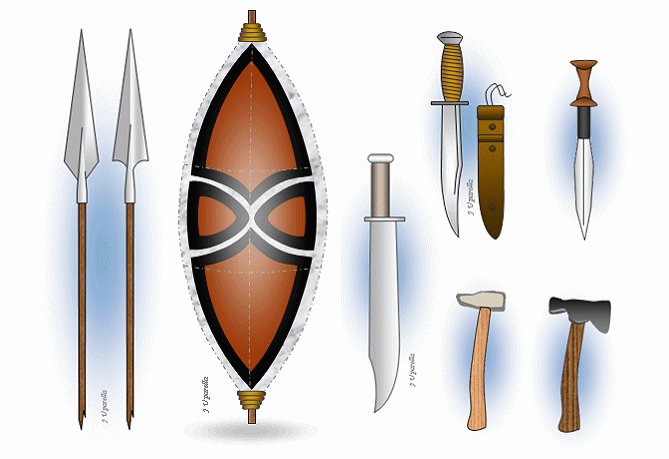
Weapons and toolsThe beginning of a friendship
Away from the village, Busuli, one of the bravest Waziri warriors was devoted to hunting. He was a lucky man who had avoided death twice. Once at the hands of the lord of the jungle himself and another from the clutches of Numa. But Busuli was not sentenced to death, a fact which was due to the sudden change of heart of Tarzan of the Apes, who gave in to his noble thoughts of a gentleman -- an educated and civilized man. He gave the warrior the opportunity to go on with his life, saving him from the jaws of the great lion stalking him. This was an important episode in the life of Tarzan related by Burroughs, whom Busuli later prevented from being attacked by Numa, when he fell from tree. Tarzan fell spectacularly after a tug of the rope that held the lion. He could face the lion, but he recognized what the bold black had done for him and this was the start of a great friendship and an appreciation for the people of Waziri.
From Angola to Kenya, the vast territory of Uziri
The credibility of the ape man as man of his word resulted in the Waziri possessing an extreme confidence in him, which was not common in African warrior tribes after their disappointing encounters with the white man.
But Lord Graystoke was a different and exceptional man. The reason why the Waziri were so confident with the lord of the jungle is simply due to the intelligence and respect with which he had led the tribe to horizons of progress, once he was promoted as principal chief of the Waziri. Busuli proposed Tarzan as the new chief of the Waziri and led him to the majestic city of Opar, which hid the gold that the Waziri had been guarding jealously for years.
But Waziri needed a place where they could move forward and make their families grow. It was not a problem for Tarzan and his beautiful wife to lead them to the territories that the lord of the jungle had acquired near Lake Victoria, in British East Africa. Sharing this land with his Waziri friends would bring about progress that would be of mutual benefit. Much of the Uziri region became the new home of the warriors so that agriculture and livestock were now sources of products and raw materials for selling to large markets. This also enabled them to learn new production techniques and become a strategic point for global trade.
The advent of technology and new customs
One of the main advantages of this displacement of the Waziri was that, despite their ancient customs, they were very concerned with everything that had to do with the technological world. Agriculture work itself then benefited from the use of machinery that in previous years would be done by oxen under the guidance of one or more men. Waziri communications for longer distances also benefitted. They learned to master the RF systems and devices of lights.
But this did not interfere in their cultural affairs and did not change the family and social organization that the Waziri had maintained over the years. They were well aware that the advances of modern technology offered amenities for the white man who had benefitted from the transmission of messages through screens and radios. The Waziri knew that to preserve its character and its sociopolitical structure allowed them to maintain the original ethnic group as a key to their survival.
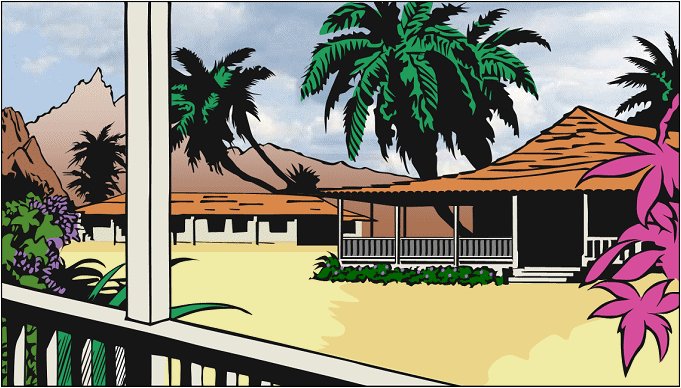
The states in Uziri
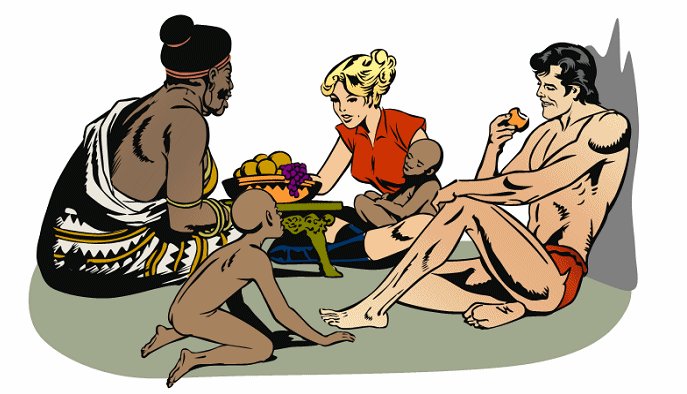
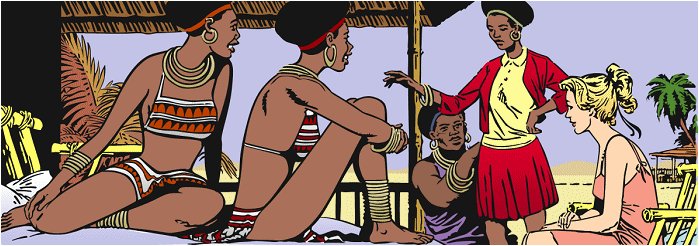
Preparing for a trip to Europa
|
|
|
|
|
|

Adriana y Jairo Uparella |
Columbia's ERB Researcher Articles in ERBzine Just a Tarzan Fan Hero of the Amazon Tarzan Wild Weapons Mangani Species |

Jairo's e-Zine |
Jairo Uparella's Mangani Dictionary
Project
SERIES CONTENTS IN ERBzine
|
Just a Tarzan Fan by Jairo Uparella ERBzine 2114 |
An Introduction Prelude to the Mangani Project ERBzine 2112 |
Mangani Dictionaries featuring The Uparella Mangani Project ERBzine 2113 |
Spoken Mangani by Jairo Uparella ERBzine 2307 |
More ERBzine Refs
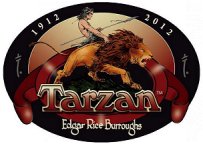
The Original Edgar
Rice Burroughs Mangani Dictionary
Africa Maps
![]()
![]()
![]()
![]()

![]()
BILL
HILLMAN
Visit
our thousands of other sites at:
BILL
and SUE-ON HILLMAN ECLECTIC STUDIO
ERB
Text, ERB Images and Tarzan® are ©Edgar Rice Burroughs, Inc.-
All Rights Reserved.
All
Original Work ©1996-2012 by Bill Hillman and/or Contributing Authors/Owners
No
part of this web site may be reproduced without permission from the respective
owners.